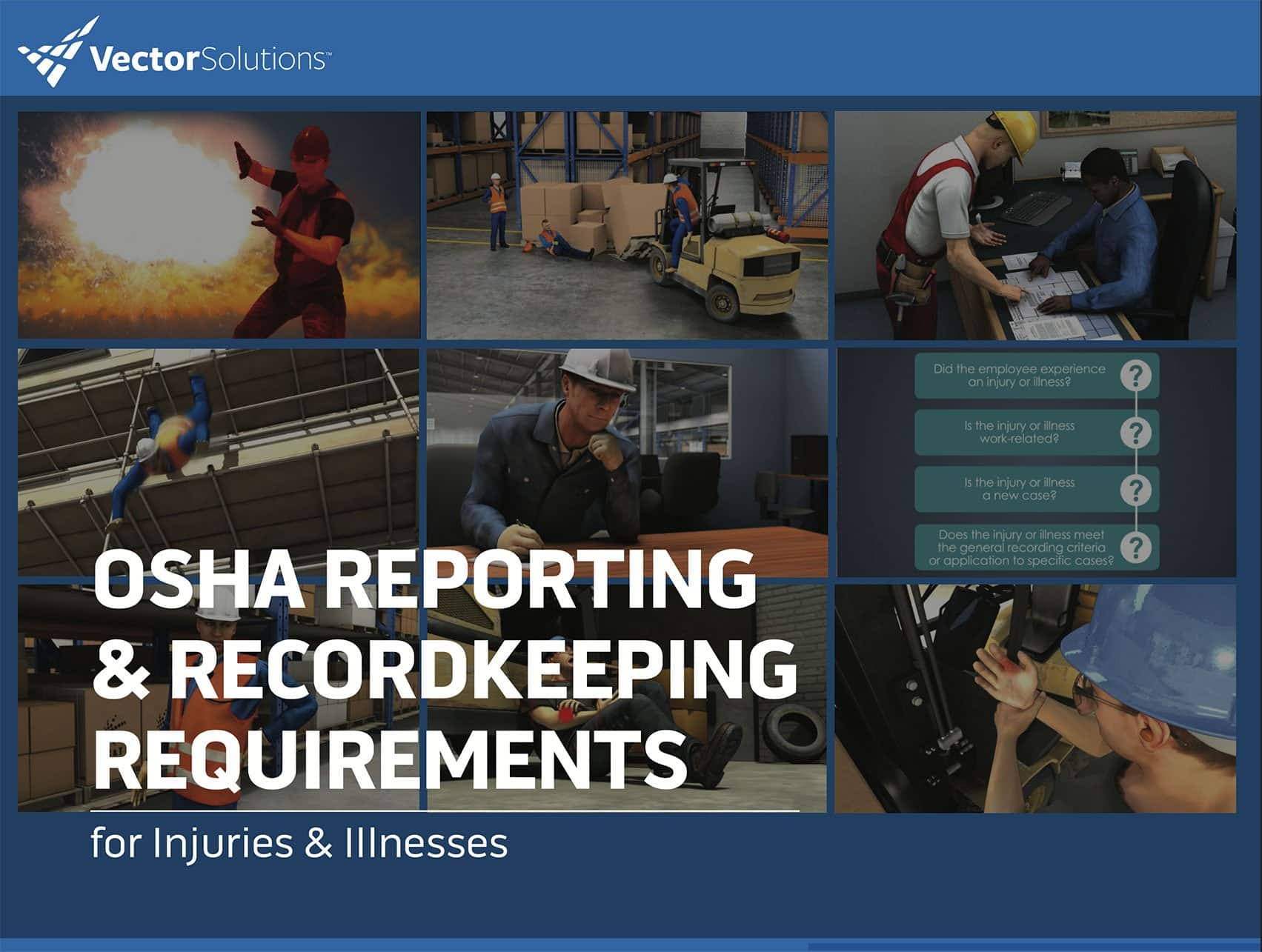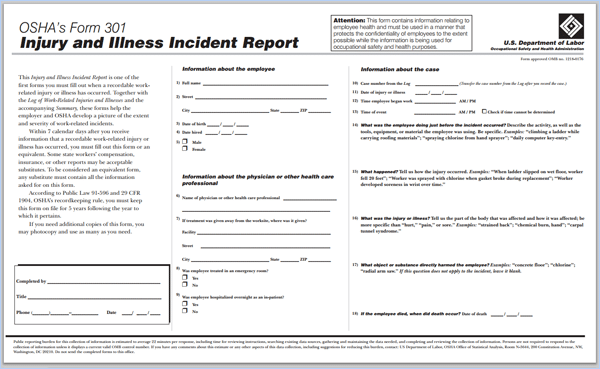February 5, 2020 9 min read

OSHA’s Form 301: Injury and Illness Incident Report
Industry:
Solution:


In an earlier post, we explained how you can determine if an injury or illness is “work-related” and “recordable.”
In this post, we’ll explain one of the first steps to take if you do have a work-related, recordable injury or illness at the workplace: complete OSHA’s Form 301, Injury and Illness Report.

Vector EHS Management Software empowers organizations – from global leaders to local businesses – to improve workplace safety and comply with environmental, health, and safety regulations.
Learn more about how our software can save you valuable time and effort in recording, tracking, and analyzing your EHS activities.
Learn more about how we can help:
- Incident Management Software →
- EHS Inspection Software →
- Key Safety Metrics Dashboard →
- Learning Management System (LMS) and Online Training Courses →
- Mobile Risk Communication Platform
Download our EHS Management Software Buyer’s Guide.
When Should You Complete OSHA Form 301?
You must complete the Injury and Illness Incident Report within seven calendar days after you receive information that a recordable work-related injury or illness has occurred at your workplace.
Remember, our earlier blog post will help you determine if an injury or illness is work-related and recordable. You’ll also want to decide if this is a new case or a recurring case. Read 1904.6, Determination of New Cases, for more information on this.
Don’t forget that in addition to these requirements, OSHA expects employers to very quickly report to OSHA when a work-related fatality or severe injury has occurred. Any fatality must be reported to OSHA within 8 hours, and any in-patient hospitalization, amputation, or loss of an eye must be reported to OSHA within 24 hours. To report these, you can:
- Call the nearest OSHA office
- Call OSHA’s 24-hour hotline at 1-800-321-6742
- Use OSHA’s Online Severe Event Reporting Form
The Ultimate Guide to OSHA Recordkeeping
Download Now
Can You Fill Out Other Forms Instead?
In some cases, OSHA will consider forms that you fill out for state workers’ compensation, insurance, or other reports “equivalent” to Form 301. To be considered equivalent, the alternate form must include all of the information that’s included on OSHA’s Form 301.
How Long Must You Keep the Completed Form 301 on Record?
For at least five years following the year in which the incident occurred.
Is The Information on the Form 301 Confidential?
According to a note on the form:
“This form contains information relating to employee health and must be used in a manner that protects the confidentiality of employers to the extent possible while the information is being used for occupational safety and health purposes.”
In addition, OSHA instructions for filling out the form say:
“If you have a reasonable basis to believe that information describing the privacy concern case may be personally identifiable even though the employee’s name has been omitted, you may use discretion in describing the injury or illness on both the OSHA 300 and 301 forms. You must enter enough information to identify the cause of the incident and the general severity of the injury or illness, but you do not need to include details of an intimate or private nature.”
(This may make more sense once you’ve read about “privacy cases” when filling out Form 300.)
Where Can You Download Copies of Form 301?
Click here to download Form 301 (along with other injury/illness forms from OSHA and instructions for completing them).
Any Tips That Would Help Fill Out the Form?
Most of the form is pretty self-explanatory. But, it does help to know that when item 10 asks you to fill in the “Case number from the Log,” it is referring to the case number for the injury or illness once it’s recorded in OSHA’s Form 300, Log of Work-Related Injuries and Illnesses.

Once you complete Form 301, you will then go ahead and complete Form 300. At that point, you can take the case number from Form 300 and record it in line 10 of Form 301.
See future blog posts for more information about Form 300, the Log of Work-Related Injuries and Illnesses; and Form 300A, the Summary of Work-Related Injuries and Illnesses.
Can Our Training and Solutions Help with OSHA Forms like the 301?
You bet we can–we’ve got at least two things that can help.
First is our EHS Management Software. And second is our online training course on OSHA Recordkeeping.
The Vector EHS Incident Management Software will help you fill out OSHA Form 300, 300A, and 301, will ease online OSHA submission, and do a lot more, too.
The short video below gives you an idea.
OSHA’s Form 301: Injury and Illness Incident Report – Vector Solutions
The Vector Solutions Training Online OSHA Recordkeeping Training Course
You might also benefit from our online OSHA Recordkeeping training course. We’ve provided a short sample below:
Conclusion: OSHA’s Form 301 for Injuries and Illnesses
We hope that helps you with OSHA’s 301 for recording injuries and illnesses.
Be sure to read the other related articles on the following topics:
EHS Software Buyer's Guide
Download Now

















